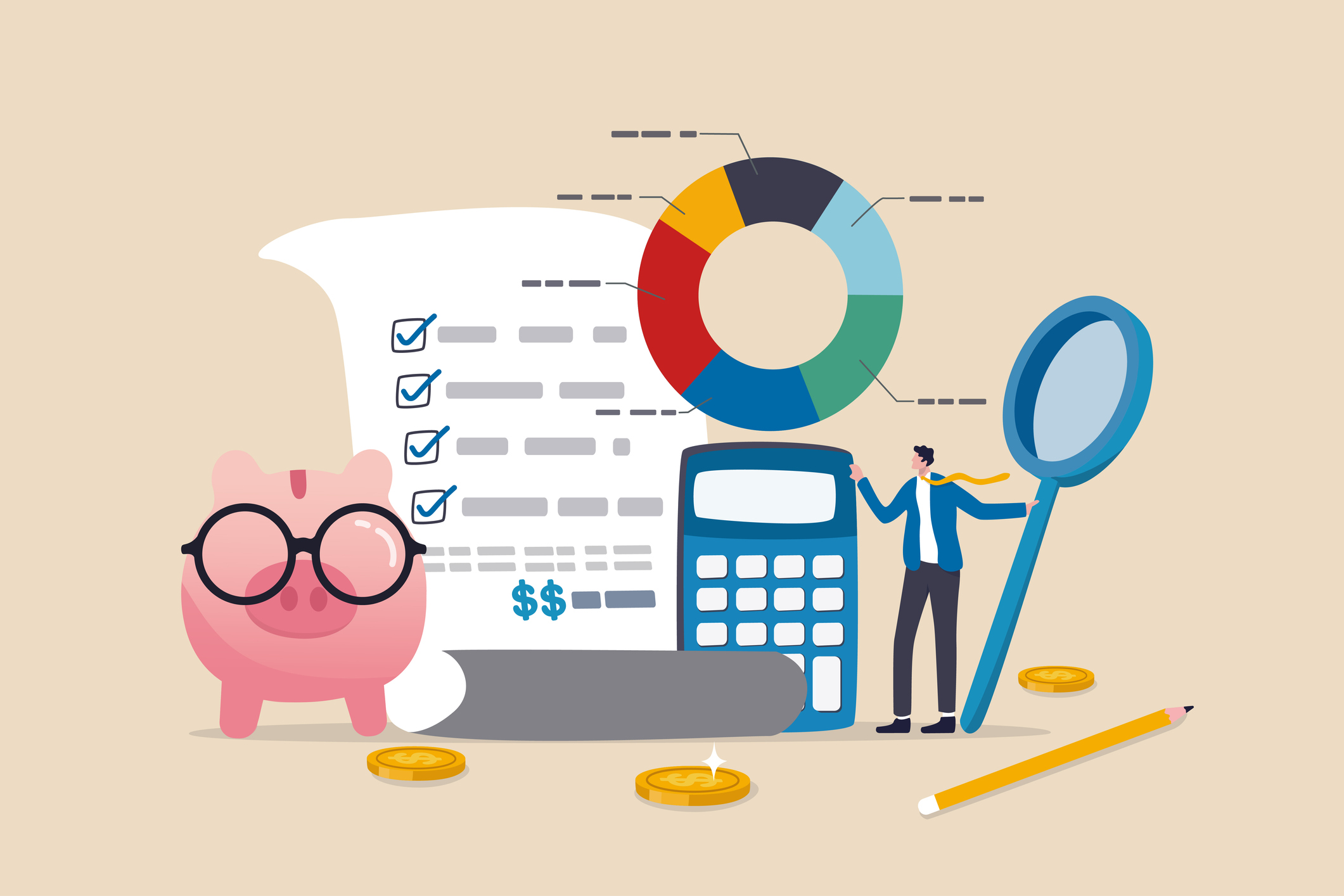Retirement in 2024: How Much Do You Need Saved?
Picture this: It’s the dawn of 2024 and you’re standing at the precipice of retirement. You can almost taste those lazy mornings, unhurried coffees, and long-awaited hobbies.
But there’s a nagging question that clouds your sunny daydreams – “how much do you need saved for retirement in 2024?”
You’ve heard whispers about ‘nest eggs’, ‘retirement plans’ and ‘defined contribution’ but it all feels as clear as a foggy morning. Don’t fret; many have been where you are now – teetering between excitement for what lies ahead and anxiety over financial unknowns.
Let’s take the steps together to make sure you have a secure financial footing. We’re here to guide you through the complexities of social security benefits and smart investment strategies and clear away any uncertainties clouding your path.
Table of Contents:
- The Role of Retirement Contributions in Achieving Your Savings Goal
- Navigating Towards Your Personal Retirement Plan
- The Role of Healthcare Costs in Retirement Planning
- Navigating Future Expenses During Retirement
- Incorporating Other Assets Into Your Plan
- Achieving Debt-Free Retirement
- The Role of Savings and Investments
- Maintaining Good Financial Habits Post-Retirement
Understanding Your Retirement Savings Goals for 2024
Saving for retirement can feel like navigating a labyrinth. Figuring out how much to save and what your retirement target should be can be confusing. The positive news is that with a suitable plan in place, you can adequately prepare for this major milestone.
As we approach 2024, it’s crucial to reassess your retirement goals and strategies. Experts often suggest that one needs roughly 80% of pre-retirement income during their golden years. But remember: this isn’t set in stone – it’s merely a starting point.
The Role of Retirement Contributions in Achieving Your Savings Goal
Your contribution rate plays an integral role when planning for retirement. Regular contributions to your nest egg help ensure that you’ll have sufficient funds once you hit retirement age.
If you’ve been lax about contributing to your retirement account until now, don’t panic. Starting today is better than never starting at all – even small amounts add up over time thanks to compounding interest.
Besides regular contributions from income streams such as salary or bonuses, consider maximizing defined benefit plans and other similar options available through employers too.
Navigating Towards Your Personal Retirement Plan
To make sure your personal plan meets future requirements involves more than just saving money; understanding how expenses will change post-retirement matters too.
A practical strategy here could involve defining specific financial targets based on projected living costs after retiring (such as healthcare costs.). From there, adjust contribution rates accordingly while keeping track using handy tools like a retirement calculator.
This strategy, coupled with careful investment choices and periodic review of savings accounts, can help ensure a comfortable retirement. Remember – every bit saved today will go towards building your nest egg for tomorrow.
Key Takeaway:
Planning for retirement in 2024? It’s all about setting the right goals and contributing regularly to your nest egg. Don’t stress if you’re late to start – even small amounts can add up over time, thanks to compounding interest. Also, keep track of future expenses and adjust savings accordingly. And remember: every bit saved today is a step towards a comfortable tomorrow.
Factors Influencing Your Retirement Planning
Retirement planning involves more than just financial savings; it is a multifaceted endeavor impacted by various elements, such as Social Security benefits and future expenditures. It’s a complex process influenced by multiple factors, such as your expected social security benefits and unexpected expenses.
One of the most significant sources of income for retirees is Social Security. The amount you receive can make a big difference in how comfortably you live during your golden years. But don’t rely solely on this; it’s meant to supplement other income sources, not be the only one.
The Role of Healthcare Costs in Retirement Planning
Healthcare costs are another factor that plays into your retirement plan. As we age, medical expenses tend to rise, so having enough saved up to cover these potential costs is crucial.
An unexpected illness or injury could lead to hefty bills if you’re not prepared. So part of effective retirement planning involves considering possible healthcare scenarios and ensuring you have coverage options available when needed.
Navigating Future Expenses During Retirement
Beyond regular living costs like housing and food, there will also be discretionary spending—traveling, hobbies, gifts for grandchildren—that need to be factored into your plans.
A healthy nest egg allows room for both necessities and fun extras without worryingly watching every penny spent. A good rule-of-thumb: aim at saving around 80% of pre-retirement income but remember everyone’s lifestyle varies considerably from others’ expectations. This makes each person’s required savings different too.
Incorporating Other Assets Into Your Plan
Last but certainly not least – consider all assets beyond traditional savings accounts or IRAs while planning. For instance, proceeds from selling real estate can help boost those much-needed funds substantially more than initially thought.
Retirement planning is a journey, and it’s never too early or late to start. So buckle up, consider these factors seriously and let your golden years be truly golden.
Key Takeaway:
Retirement planning is more than just saving; it’s a complex journey influenced by social security benefits, healthcare costs, future expenses and your assets. Aim to save around 80% of pre-retirement income but remember each person’s needs vary. So start now, factor in these considerations seriously, and make your golden years truly golden.
Estimating Your Retirement Expenses
Planning for retirement involves a good deal of guesswork, but you can make educated estimates about your future expenses. Figuring out what your income was before retirement and how it may shift after you retire is the first move.
The average 60-something has $112,500 in retirement savings. But remember that’s just an average; the actual figure will depend on factors like lifestyle choices and individual healthcare expenses.
A closer look at the “4% rule”
You might have heard about the “4% rule”. This guideline suggests that if you withdraw 4% from your nest egg during your first year of retirement, then adjust that amount for inflation each subsequent year, there’s a strong likelihood that your savings will last 30 years or more. However, this approach isn’t perfect as it doesn’t consider fluctuations in spending money or market conditions over time.
To better estimate future costs such as living comfortably after retiring or dealing with potential long-term care needs, use our online retirement calculator.
Budgeting Healthcare Costs During Retirement
Healthcare costs are one of the most unpredictable parts of planning for retirement because they’re largely dependent on individual health circumstances. That said, according to Fidelity Investments’ annual Retiree Health Care Cost Estimate survey, an average retired couple aged 65 could expect to spend approximately $295K-$360K out-of-pocket on healthcare alone throughout their golden years.
Maximizing Social Security Benefits for Retirement
Social security benefits play a pivotal role in your post-retirement income. But did you know there are ways to boost these benefits? Let’s explore how you can increase your benefits.
The first step is understanding the impact of retiring early on your benefit amount. While it’s tempting to retire at 62, waiting until full retirement age (FRA) will ensure higher monthly payments. This approach makes sense because social security calculates your payout based on life expectancy – the longer you wait, the more substantial the sum.
Beyond Full Retirement Age: Delayed Retirement Credits
If financial circumstances permit, consider delaying claiming beyond FRA up until age 70. For each year delayed past FRA up until 70, your annual increase could be as much as 8%.
This strategy works best if you have other income sources or savings accounts to draw from during this period. It may sound like a gamble but think of it as an investment with guaranteed returns – one few other investments can match.
Making Sense of Spousal Benefits
If married or previously married for over ten years and not currently wedded, spousal benefits come into play too. The lesser-earning spouse might qualify for a benefit equaling half of their partner’s PIA (Primary Insurance Amount).
According to experts, spousal benefits “can substantially supplement retirement nest eggs.”
To maximize these benefits effectively requires strategic planning based on individual circumstances; what works well for some might not yield similar results for others.
Remember: Every dollar counts when it comes to retirement. And by being savvy with your social security benefits, you can ensure a more comfortable and financially secure post-work life.
Building Your Retirement Savings: Strategies and Tips
Let’s dive into the exciting world of building your retirement savings. Even with a goal of $100,000 saved by 2024, it is still achievable if the right investment plan is in place. However, this requires a well-planned investment strategy.
A key tip here is to max out your contributions. If you have access to defined contribution plans like Roth IRAs or a thrift savings plan, make sure you contribute as much as possible. It can be an effective starting point for boosting your nest egg.
The Power of Roth IRAs
Roth IRAs are particularly attractive because they allow for tax-free withdrawals during retirement—a major plus when planning how much money you’ll need post-retirement.
An important aspect that people often overlook while building their retirement savings is considering potential income streams beyond just their primary job earnings and security benefits—such things could include investments from mutual funds or real estate holdings.
Making Investments Work For You
To live comfortably after retiring in 2024, one must think about diversifying their portfolio by investing across different asset classes, including equities (stocks), bonds etc., which provide steady returns over time but also reduce risk due financial market fluctuations thereby helping preserve wealth long-term care needs arise unexpectedly down line too.
Creating an Effective Retirement Income Plan
It’s time to talk about creating a solid retirement income plan. The key is finding the right balance between your savings and expected expenses in retirement. To start, you’ll need steady income streams that will cover both your daily living costs and potential surprises.
So, what’s the solution? You have multiple sources of potential income at your disposal such as social security benefits, pension payouts from defined benefit plans, or withdrawals from personal retirement accounts like 401(k)s or Roth IRAs.
Next up on our agenda – understanding how much you need saved for a comfortable lifestyle post-retirement. Now this isn’t an easy question because it largely depends on what kind of lifestyle you aspire to lead after retiring. But don’t fret. A strategic savings plan, taking into account factors like current age, planned retirement age, existing nest eggs and desired monthly income can give us a decent starting point.
Diversifying Your Income Streams
Diversification doesn’t just apply to investments; it’s also critical when building sustainable revenue channels during golden years. For example, relying solely on social security benefits might not let you live comfortably through those dreamy sunset days.
A well-balanced blend could include Social Security payments (which typically replace around 40% of pre-retirement earnings), pension distributions if available, annuity payments or even part-time work if possible.
Sustainable Withdrawal Rates: Ensuring Your Savings Last
The next big thing is deciding how much money to withdraw annually from your portfolio without risking running out too soon – think turtle versus hare approach here. It’s where concepts like the “4% rule” come into play.
It’s all about finding a sustainable withdrawal rate that lets your retirement nest egg last as long as you do. Remember, never allow your retirement funds to become depleted.
Key Takeaway:
Planning for retirement is all about striking a balance between your savings and future expenses. A reliable income plan should include diverse sources such as social security, pensions, or personal accounts like 401(k)s or Roth IRAs. But remember – how much you need to save largely depends on the lifestyle you aim for post-retirement. Also crucial? Figuring out sustainable withdrawal rates from your nest egg to make sure it lasts as long as you do.
Ensuring Long-Term Financial Security in Retirement
Your retirement wealth isn’t just about the amount you’ve saved. It’s also about how wisely you manage and use it. Let’s talk about risk tolerance, sustainable withdrawal rates, and investment returns.
The foundation of financial security in retirement is diversification across different asset classes to spread out risk. You wouldn’t put all your eggs in one basket while grocery shopping; so why do it with your life savings? A diversified investment portfolio can help mitigate market price return fluctuations and safeguard your savings.
Sustainable Withdrawal Rate: The 4% Rule
A fundamental part of preserving long-term fiscal stability is recognizing how much money you can securely take out from your funds annually without diminishing them too soon – this is called a sustainable withdrawal rate. For many years, the standard rule has been 4%, but every situation differs depending on lifestyle costs, health expenses, etc., hence it’s essential to calculate yours.
Mind Your Risk Tolerance
Risk tolerance varies for everyone based on age, income level, and personal comfort with potential losses or gains. Understanding where you stand will guide the structure of your investments – more conservative portfolios might lean heavily into bonds whereas those open to higher risks may hold larger proportions of stocks.
Growth through Investment Returns
Another critical factor contributing towards financial security during retirement are investment returns that compound over time resulting in growth beyond what was originally invested. While we cannot control market performance or predict its future trajectory precisely, having a balanced portfolio can increase the likelihood of stable, positive returns.
Retirement is a long game. And just like in chess, it’s not about winning quickly but securing your king. Or in this case, it’s about preserving your financial security for the endgame. Make smart moves today to enjoy peace of mind tomorrow.
Key Takeaway:
Retirement wealth isn’t just about saving, it’s about smart management. Diversify your investments to spread risk and consider a sustainable withdrawal rate, often pegged at 4%. Understand your personal risk tolerance when structuring investments and remember that investment returns can compound growth over time. Make wise decisions today for long-term financial security in retirement.
Paying Down Debts Before Retirement
As you approach retirement, it is best to be free of debt obligations. A well-executed plan can help you pay off your debts before retirement.
If a significant chunk of your income goes towards servicing debt, it’s time to rethink your strategy. Paying off high-interest loans should take precedence over low-interest ones for an efficient strategy. After all, there’s no point in having money stashed away earning 1-3% when a credit card debt charges around 15%. If possible, consider consolidating or refinancing high interest-rate loans.
Achieving Debt-Free Retirement
Your journey towards becoming debt-free starts with setting up clear goals and understanding where most of your paycheck goes. Creating a budget will allow you to track expenses and identify areas where cuts can be made.
To hasten this process, funnel any windfall gains like bonuses or tax refunds directly into paying down the principal amount on loans or credit cards. Every dollar counts.
The Role of Savings and Investments
Savings alone might not get us out of the rut quickly enough though – smart investments could lend some much-needed support here. For instance, “Roth IRAs”, as part of our investment portfolio, offer attractive post-retirement benefits due to their unique tax structure.
Maintaining Good Financial Habits Post-Retirement
Climbing out from under hefty financial obligations doesn’t mean we’re home free- maintaining those good habits is the key. Remember that unnecessary spending can lead right back into old pitfalls after retiring; it’s important not only to learn how to save but also how not to spend.
Being debt-free during retirement can be the difference between having a peaceful and fulfilling experience versus being burdened by financial concerns. Let’s kick off the voyage to financial security now.
Key Takeaway:
Before you hit retirement, make sure to clear your debts. Focus on high-interest loans first, and consider loan consolidation or refinancing. To achieve a debt-free life, set clear financial goals and keep track of your expenses – every dollar counts. Savings are crucial but complement them with smart investments like Roth IRAs for post-retirement benefits. Once retired, continue practicing good financial habits to avoid falling back into debt.
Conclusion
Armed with the knowledge of defined contribution plans, maximum contributions and their impact on retirement planning, you can now calculate how much should be saved for retirement in 2024. We’ve journeyed through the significance of defined contribution plans and maximized contributions, shedding light on your savings goals.
We’ve unpacked social security benefits, health care costs, future expenses and their impact on retirement planning. Remember – it’s about finding a balance between living comfortably now while also securing your financial future.
We took an insightful detour into estimating retirement expenses using pre-retirement income as a starting point. And let’s not forget our deep dive into Roth IRAs’ role in diversifying investment portfolios and supplementing monthly income post-retirement.
You are now empowered to create an effective retirement income plan. So take action! Pay down debts, build sustainable withdrawal rates for long-term financial security. You’re standing at the precipice of your golden years – stride forward confidently!












